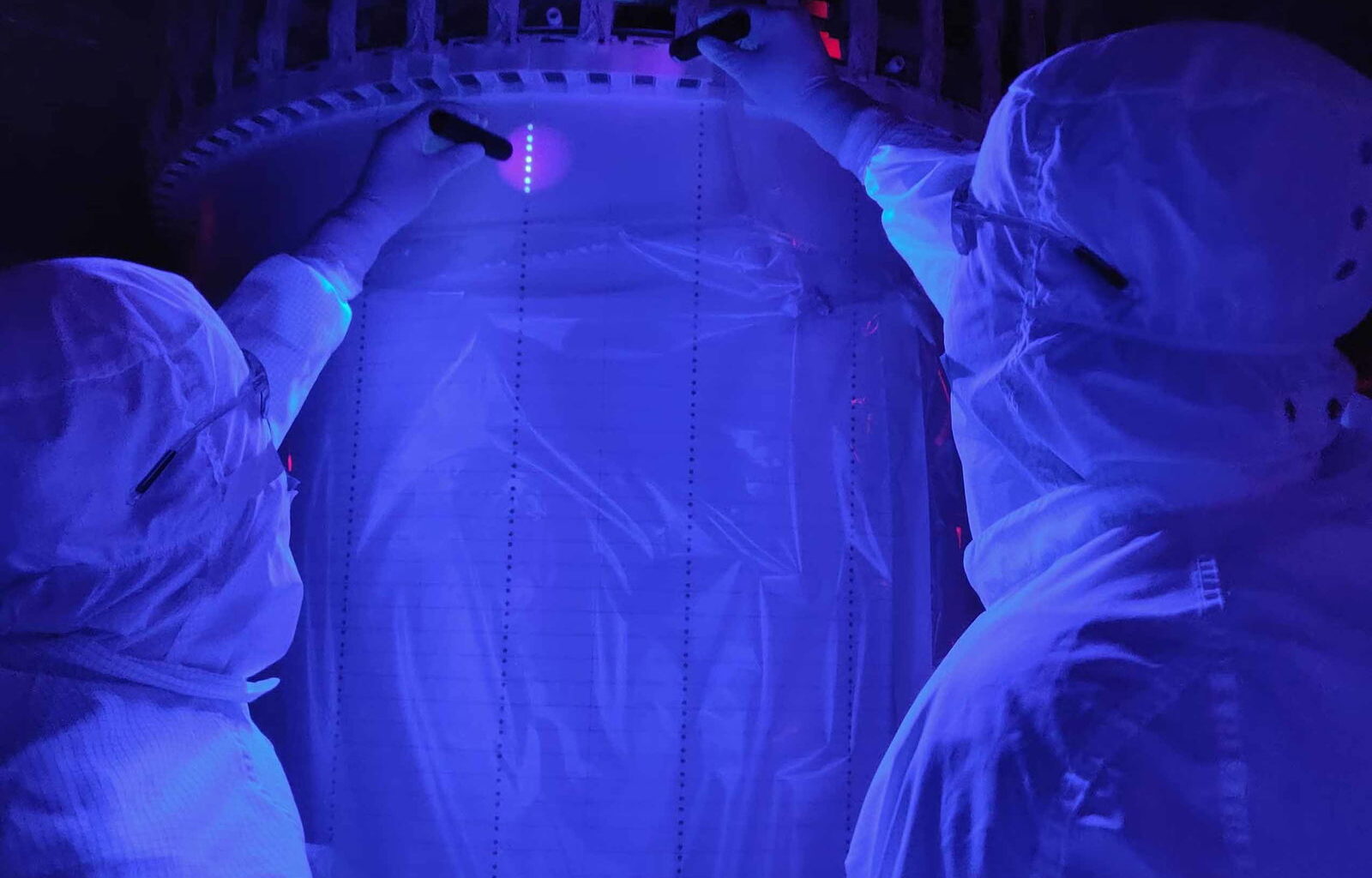Closing in on the mysterious nature of dark matter, experiments conducted in a deep underground cavern are helping scientists to probe weakly interacting massive particles (WIMPs), one of the leading candidates.
At the Sanford Underground Research Facility in South Dakota, the extreme sensitivity of LUX-ZEPLIN (LZ), the world’s most sensitive dark matter detector, has allowed researchers to discern some of the faintest potential detections ever recorded. Now, that data is leading the way towards better models of the universe and narrowing the search for the elusive non-luminous substance.
LUX-ZEPLIN and Dark Matter
Despite widespread agreement on the importance of dark matter to the universe, which comprises more than a quarter of everything that exists, its existence remains theoretical. To directly prove the existence of dark matter, researchers seek firsthand observations of the material.
“While we always hope to discover a new particle, it is important for particle physics that we are able to set bounds on what the dark matter might actually be,” said co-author Hugh Lippincott, a UC Santa Barbara experimental physicist.
The new work combines results from a recent 220-day LZ run with 60 days from the first run, offering initial conclusions. The experiment is expected to continue through 2028, ultimately collecting 1,000 days of data.
Inside the LZ, ten tons of pure liquid xenon are housed in two nested tanks, creating a shielded environment for detecting faint signals without interference. As their name suggests, WIMPs produce extremely weak signals, often buried in background noise. The experiment seeks to capture the light and electrons emitted when WIMPs interact with xenon nuclei, with the Outer Detector (OD)—acrylic tanks filled with gadolinium-loaded liquid scintillator—helping identify such rare interactions.
Removing the Noise
Noise comes in many forms, each mitigated in its own way. The underground location shields the detector from cosmic rays, while the use of low-radiation construction materials minimizes local interference. The layered design blocks radiation and helps track particles, making it easier to distinguish genuine dark matter signals from mimics. Additional safeguards further reduce any stray noise.
 The tightest precautions are taken in the LZ Experiment’s underground facility to avoid impacting the data (Credit: Matt Kapust/Sanford Underground Research Laboratory)
The tightest precautions are taken in the LZ Experiment’s underground facility to avoid impacting the data (Credit: Matt Kapust/Sanford Underground Research Laboratory)
The OD itself also aids in identifying two of the most significant noise sources: neutrons and radons, both of which mimic WIMPs.
“The tricky thing about neutrons is that they also interact with the xenon nuclei, giving off a signal identical to what we expect from WIMPs,” said co-author Makayla Trask, a UC Santa Barbara graduate student. “The OD is excellent at detecting neutrons and confirms a WIMP detection by not having any response.”
“Radon undergoes a particular sequence of decays, some of which could be mistaken for WIMPs,” said co-author Jack Bargemann, a postdoctoral researcher. “One of the things we were able to do in this run was look out for the whole set of decays in the detector to identify the radon and avoid confusing them for WIMPs.”
Salting the Data
To counteract unconscious bias, the team also employed a technique called “salting,” which involves adding fake WIMP detections to the dataset. These signals are removed later, but the process allows researchers to test whether they can accurately distinguish genuine events from fabricated ones.
“We’re pushing the boundary into a regime where people have not looked for dark matter before,” said co-author Scott Haselschwardt, a University of Michigan assistant professor. “There’s a human tendency to want to see patterns in data, so it’s really important when you enter this new regime that no bias wanders in. If you make a discovery, you want to get it right.”
From these intensive measures to investigate one of the universe’s faintest detectable phenomena, researchers are finally closing in on identifying what WIMPs are and whether they constitute dark matter. While further work remains, this early data is already enabling researchers to refine universal models and narrow the search for dark matter and other types of exotic physics.
“Our experiment is also sensitive to rare events with roots in diverse areas of physics,” said co-author Chami Amarasinghe, a postdoctoral researcher. “Some examples are solar neutrinos, the fascinating decays of certain xenon isotopes, and even other types of dark matter. With the intensity of this result behind us, I’m very excited to spend more time on these searches.”
The paper, “Dark Matter Search Results from 4.2 Tonne−Years of Exposure of the LUX-ZEPLIN (LZ) Experiment,” appeared in Physical Review Letters on July 1, 2025.
Ryan Whalen covers science and technology for The Debrief. He holds an MA in History and a Master of Library and Information Science with a certificate in Data Science. He can be contacted at ryan@thedebrief.org, and follow him on Twitter @mdntwvlf.

